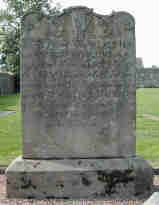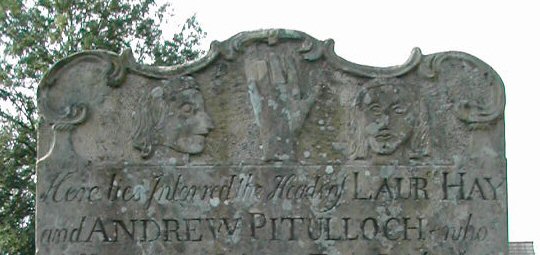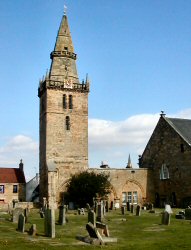
The covenanters grave.
The story so far — James VI (James I of England), Charles I & II and James II decided to run the church after a catholic fashion, after all they were the supreme rulers. But they did not reckon on a bunch of Scots Presbyterians who just wanted to practice worshiping God in the new "no frills" Protestant way. So they signed a Deed of Covenant and the doo-doo hit the fan.
These Covenanters — Laurence Hay,a Fife weaver and Andrew Pitulloch, a Labourer from Largo were signatories on a paper entitled "A Testimony against the Evils of the Times" and for that they were condemned. They were hanged at the Grassmarket in Edinburgh, 13 July 1681 and their heads severed from their bodies (they were lucky and got to die first) and affixed to the Tollbooth of Cupar. They stayed there until the Glorious Revolution, which brought William of Orange from Holland to the British throne, when they were taken down and buried in the church yard.
The third martyr, David Hackston of Rathillet, was captured after a brave fight at Ayrsmoss and was executed in a very barbarous way 30 July 1680, "at the cross of Edinburgh, and there upon a high scaffold have his right hand struck off, and after some time to have his left hand struck off, and then to be hanged up and cut down alive, and have the bowels taken out, and his heart to be shown to the people by the hand of the hangman, and his heart and bowels to be burnt in the presence of the people... and afterwards have his head cut off, and his body divided up into four quarters with his head to be affixed at Netherbow, and one of his quarters with both his hands to be affixed at St. Andrews, another quarter at Glasgow, the third at Leith the fourth at Burntisland."
David Hackston was one of the nine assassins of Bishop Sharp.
No chance of probation or community service!
 Two
heads and a hand, shown at the top of their grave stone.
Two
heads and a hand, shown at the top of their grave stone.

 The old church steeple
The old church steeple